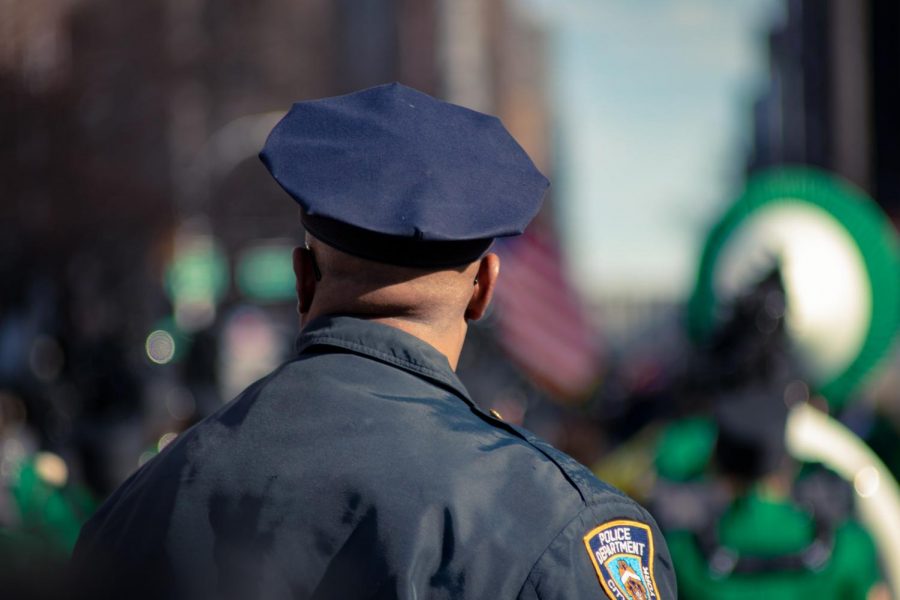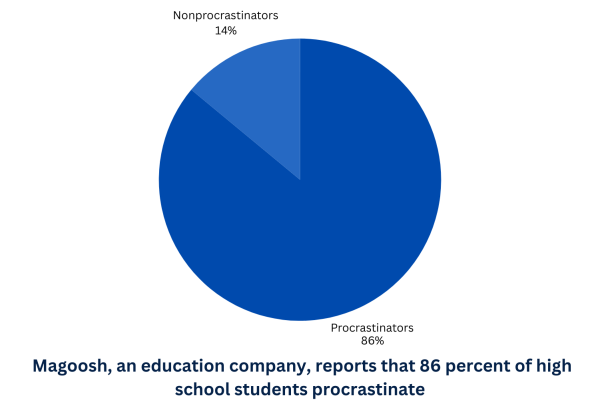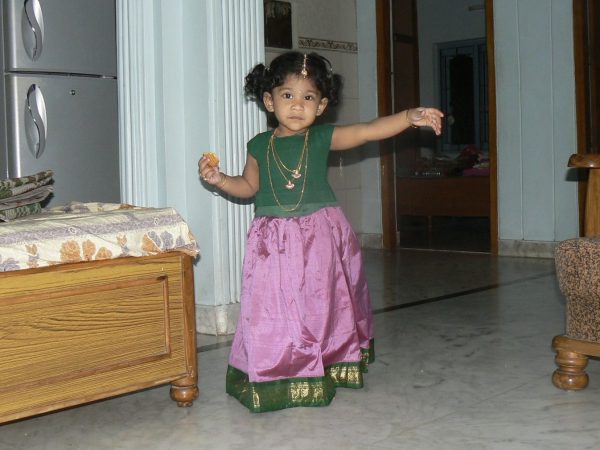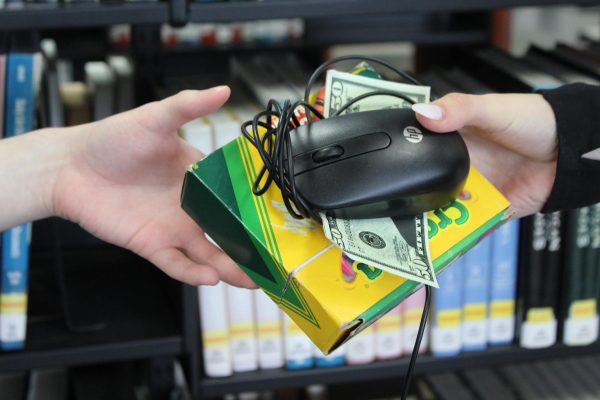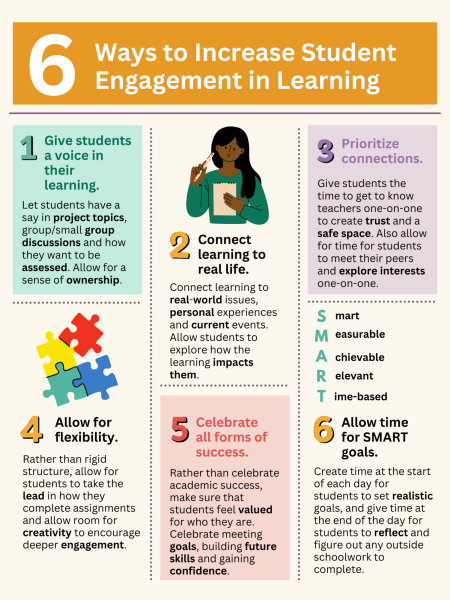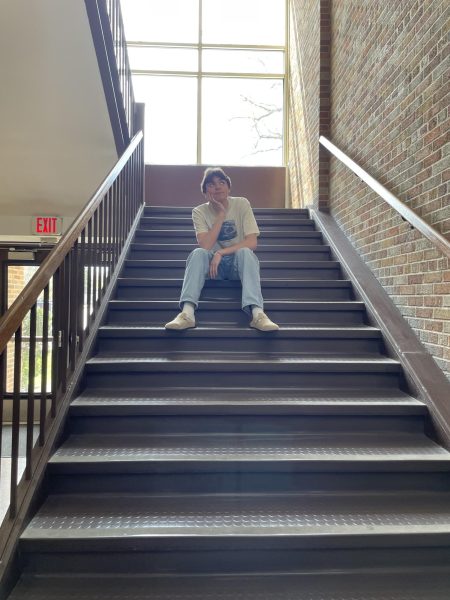The case against police presence
Photo by Fred Moon on Unsplash
Police officers are common sights in our public spaces, including schools, but their presence rarely has the intended effect and can sometimes cause more harm than good.
In late February it was announced that SWAT officers would begin patrolling Chicago Transit Authority trains. A week later, Chicago Mayor Lori Lightfoot announced that the city would add 50 new police officers to the 200 who already patrol the “L,” due to a recent spike in crime.
Hours later, two Chicago police officers shot an unarmed man during rush hour on the CTA Red Line. In a video of the incident posted on Twitter, one police officer is heard telling his partner to shoot the unarmed man. She did. In the back.
This brings up two questions. Does adding more cops decrease crime? And do cops even belong in public places to begin with?
The answer to the first question is no. Adding more cops does not ensure a decrease in crime, according to Jim Bueermann, the president of the Police Foundation, a nonprofit group focused on improving policing. A meta-analysis, done by researchers at the University of Cincinnati, of the size of police agencies and crime rates, shows that there is no statistically significant evidence to suggest that adding more police will decrease crime.
The second question is more complicated, and a sensitive subject, especially in America today. So let’s take a step back, and talk about the purpose and creation of cops.
Police were created to protect the monied class that emerged in the 19th century from the new working class, according to Sam Mitrani, a history professor at the College of DuPage and author of “The Rise of the Chicago Police Department: Class and Conflict, 1850-1894.”
Before the 19th century, there were no police forces recognizable to you or I anywhere in America. In northern sections of America, sheriffs and constables were elected by the population and were therefore more easily held accountable. In the south, slave patrols acted as the only real “law” enforcement, according to Dr. Gary Potter, author of “The History of Policing in the United States.” The term “beat,” which describes the territory and time that a cop patrols, originated from the slave patrols, according to Ben Fountain, author of “Beautiful Country Burn Again,” which ties the 2016 election back to America’s roots.
Northern cities soon found themselves bursting at the seams, full of immigrant wage workers. The first publicly funded police force with full-time police officers was created in Boston in 1838, according to Dr. Potter. Boston was a major commercial shipping center and businesses began hiring armed guards to protect the ports and their property. Finding this incredibly expensive, the merchants who held massive amounts of influence in the municipal government were able to transfer the cost onto the taxpayer, arguing it was for the common good.
In his book, Dr. Potter explains that cops were expected to control a “dangerous underclass” that included African Americans, immigrants and the poor. When class conflict exploded in American cities in the late 19th century, police viciously attacked the wage-laborers on strike. During this era of the political machine, police also became political tools, with sergeants and captains being picked by the leader of the local political ward. According to Time, the poltical leaders “then were able to use police to harass opponents of that particular political party, or provide payoffs for officers to turn a blind eye to allow illegal drinking, gambling and prostitution.”
Since then, according to Mitrani, the police have been presented as a “thin blue line” between civilization and the disorder of the working class. They separated themselves from the working class, wearing uniforms, creating internal disciplinary policies, and eventually creating an internal culture, typified by an “us vs. them” mentality and a focus on the hyper-masculine, according to Dr. Jace L. Valcore, an assistant professor of criminal justice at the University of Houston-Downtown.
Although the main target of early police was new European immigrants, that soon changed with the Great Migration and massive numbers of African Americans fleeing the south and its racial segregation. President Herbert Hoover established the National Commission on Law Observance and Enforcement, and in 1931-1932, they published their 14-volume “Report on Lawlessness in Law Enforcement.” Many see this as the beginning of the truly modern police force. It’s true that serious efforts to professionalize and reform the police were made, but none of them addressed racial issues.
As race riots erupted in the 1960s, Lyndon Johnson created the National Advisory Commission on Civil Disorders to find the cause of the massive riots. The commission reported “police actions were ‘final’ incidents before the outbreak of violence in 12 of the 24 surveyed disorders.” This means that at least half of the time, police violence caused the outbreak of the riots.
Police violence against the black community continued, and the proliferation of recording and streaming technology has made it only more obvious today. And as police continue to become more and more militarized, the gap between them and their communities increases.
How can police serve a community if they continue to set themselves apart from it? The images are all too familiar — police in riot gear taking on peaceful protesters, SWAT teams evicting people or driving tanks down the streets. If they ever were part of our communities, they certainly aren’t now. Not every interaction is like this, but by and large, police forces across the country continue to evolve into a militarized force. And armed military forces don’t belong in our shared spaces.
Yet police are also in one of the most important places in our communities: our schools. This despite there being very little evidence for their presence.
There are approximately 46,000 School Resource Officers (SROs) in American schools. It hasn’t always been this way. According to Time, SROs only really became prevalent during the 1980s tough-on-crime movement, which grew in response to rising crime rates and incredible racism. Then, the explosion in school shootings, despite still being statistically improbable, entrenched SROs on high school campuses.
School shootings still happen, with or without SROs. It is true that sometimes SROs stop school shootings, as was the case at Dixon High School in Illinois in 2018 when an SRO confronted and stopped a school shooter in the hall. Yet two days after that incident, 10 people were killed in a school shooting near Houston. Among the injured was a SRO with the Santa Fe Independent School District Police Department. Marjory Stoneman Douglas High School in Parkland, Florida, had an armed sheriff’s deputy on campus at the time of its shooting in 2018, but he never fired his weapon.
Instead their presence has allowed schools to sometimes turn to law enforcement to handle disciplinary measures. Although LHS’s SRO, Libertyville Police Department Officer Wayne Kincaid, mentioned in an interview over the phone that he is not involved in regular disciplinary measures unless there is a clear violation of the law and he tries “to keep [students] out of the court system,” LHS is hardly a typical American high school, and its system of discipline is no exception.
In 2017, the ACLU released a paper called “Bullies in Blue: Origins and Consequences of School Policing,” which “explores the beginnings of school policing in the United States and sheds light on the negative consequences of the increasing role of police and links it to both the drivers of punitive criminal justice policies and mass incarceration nationwide.” The report noted that “police, who were neither trained nor certified in counseling or social work, carried on with traditional policing models, addressing perceived rowdiness and disorder through arrests and surveillance of schoolchildren.” Similar studies from Washington Law Review, Justice Quarterly and Journal of Criminal justice all corroborated the ACLU’s claim.
This is a big deal. Cops aren’t administrators or counselors. Administrators and counselors are specifically trained to de-escalate and discipline with suspensions or detentions. Cops aren’t. Potential SROs do have to go through a 40-hour training course before becoming an SRO, according to Officer Kincaid.
However, this can’t compare to the institutional training police receive in their normal career. Police officers get 120 hours of training in the use of force for every eight hours in conflict resolution, according to NPR. And use force they do. As administrators turn kids over to police with more and more frequency, numerous incidents of SROs using force on students have made national headlines. It’s nearly impossible to say if these incidents are anecdotal or if SROs use more force than they should. I found no national data about the use of force nationwide by SROs. However, I did find pages and pages of examples of SROs using extreme force.
And, of course, studies have shown that SROs disportionately target minorities and students with disabilities. Black students made up only 16 percent of student enrollment in the 2011-2012 school year, yet they comprised 27 percent of students referred to law enforcement and 31 percent of students involved in a school-related arrest, according to the U.S. Department of Education Office for Civil Rights data.
Meanwhile, students with disabilities represented about 12 percent of the student population but accounted for 25 percent of students arrested and referred to law enforcement despite the fact that they are no more likely to commit crime.
Although it’s hard to say if an SRO was involved in every one of these cases, or if it was other law enforcement, the presence of an SRO at schools makes the option to include law enforcement in the disciplinary process extremely easy.
We know adding more cops doesn’t solve crime. We know that police culture often precludes being a part of the community that they police. So why are cops still in our subways and our schools?



